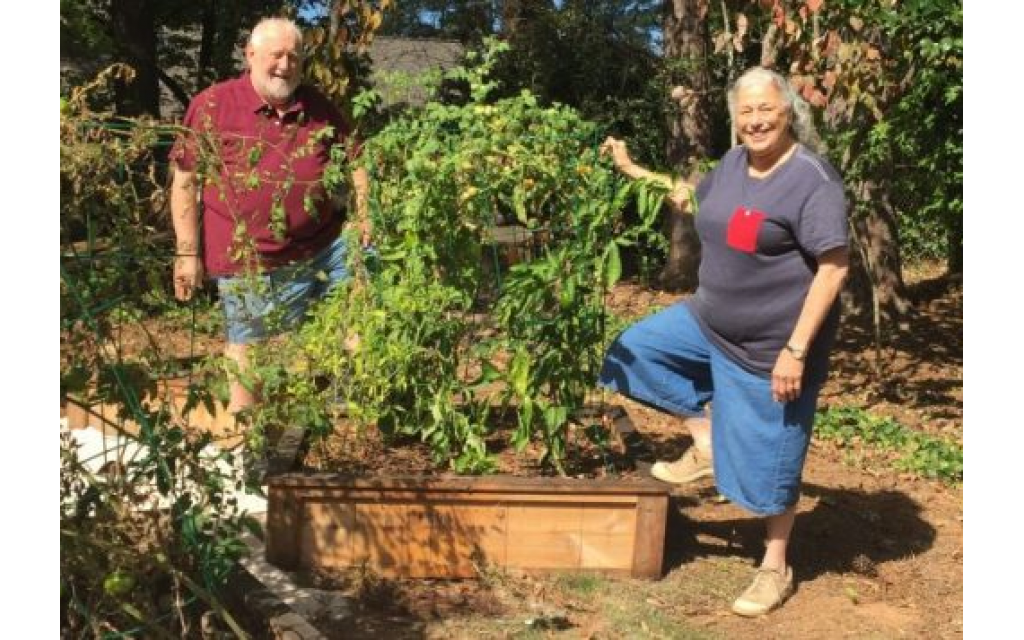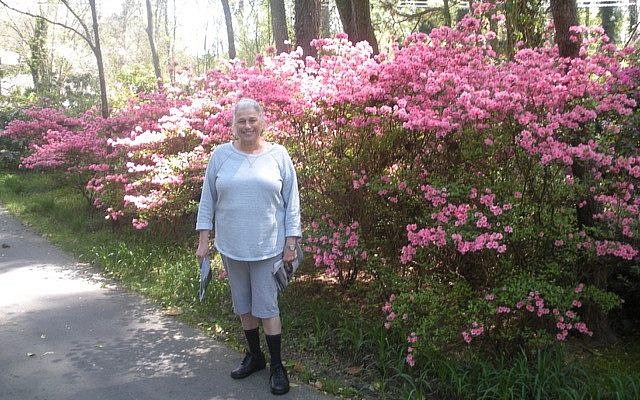Gardening Tips from a Couple of Green Thumbs
Judy Lipis’ parents always kept a well-stocked vegetable garden. So when it came time to buy her first home, it was only natural to start one of her own.
Growing up in Ohio, Judy Lipis’ parents always kept a well-stocked vegetable garden. So when it came time for her and husband Allen to buy their first home, it was only natural to start a garden of her own.
“I’ve always loved vegetable gardening,” she said. “I still, to this day, will not eat a store-bought tomato, because I’ve been so spoiled by being outside and picking mine right off the vine, rinsing it and eating it.”
Now 50 years after that garden in the couple’s first home together, the two veteran gardeners shared some of their tips and tricks with the AJT.
“I usually start the year in January by taking a soil sample and sending it off to the Dekalb County Extension Office,” Judy said.
The office works with the University of Georgia and the U.S. Department of Agriculture to provide useful information, advice and soil testing to residents.
“They tell me what I need to add to my soil to supplement it and then I can go ahead and get ready to grow,” she said.
From there, her planting season begins, though, she’s always careful with more delicate tenders, even when it feels like spring outside.
“I never put anything tender in the ground before Easter or Pesach,” she said. “There is always one cold snap right before then that will knock out basil, dill or anything tender.”
And while tenders can present some unique challenges, Judy shared her favorite plants for beginners dipping a toe into the world of gardening.
“Tomatoes are easy, but what’s really, really easy are peppers,” she emphasized. “We stuck one chili pepper plant in the ground several years ago that provided enough hot peppers for everybody in the area.”
She also recommended lettuce and cucumbers as other starting points for beginners who reap the fruits — or in this case, vegetables — of their labor.
“We had a zillion cucumbers. I couldn’t give them away fast enough,” she said.
As for plants to stay away from, Judy cautioned that even with a large outdoor space in her previous house, corn was one that she stayed away from.

“It was the only thing I didn’t grow that I thought about,” she said. “It’s just not worth it. You only get two or three or four ears a year from it, and that’s just not a good use of space.”
One thing Judy said to be cautious of is wild (or not so wild) life in the area.
“We live in a neighborhood with a lot of cats, and that means sometimes they want to use my vegetable garden as a litter box,” she said. “Last year I grew only plants like tomatoes and cucumbers because they tore up where I had carrots, lettuce and radishes.”
Raised boxes, if space permits, were also on Judy’s list of tips. She explained that they were helpful both in terms of not having to bend down as far and also with the vegetables’ growth.
“Where we are in the Northeast part of the city the soil is primarily red clay,” she said. “Unless you have a raised garden or really well amended soil, you’re going to get the weirdest looking carrots because they have to grow around the chunks of clay.”
She also advises those just starting out to rotate crops from year to year in each area, and complete extensive research before their first year gardening, which will create less work down the line.
“The first time should take a good amount of research because figuring out how much sunlight you get can really have a big impact on what you can get to grow,” she said.
As for why she gardens, Judy explained that the quality cannot be matched.
“I like to eat,” she joked. “But I really prefer my food to be clean and organic, so gardening really is an automatic thing for me. It’s what I love to do every year.
Here are Allen’s top 10 tips for future green thumbs:
1. Put tall bushes near the back of the yard to give more privacy.
2. Build garden boxes to hold the soil.
3. Use metal supports for tomatoes and peppers.
4. Buy top soil to mix with Georgia red clay to allow for better vegetable gardens.
5. Don’t plant in a straight row, but plant in clusters for a grander display.
6. Plant bulbs in the winter or early spring.
7. Japanese maple trees are beautiful and colorful in the fall.
8. Plant lots of herbs to use in the kitchen, such as rosemary and parsley.
9. Chimes hanging somewhere will make the garden sound lovely.
10. Label your plants so you know and can explain what you have to others.




comments